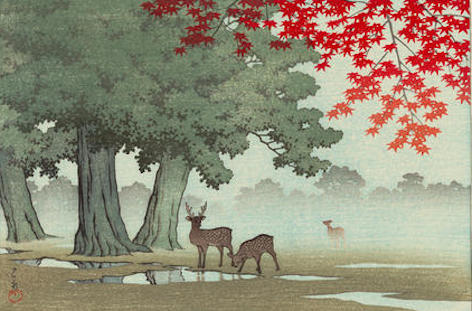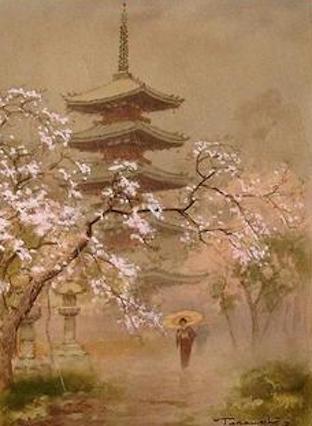Japan Art and Nara: Buddhist Pagoda and Roaming Deer
Lee Jay Walker
Modern Tokyo Times

Kasamatsu Shirō (1898-1991) produced this stunning print above in the 1930s.
It depicts deers roaming in Nara, with a stunning Buddhist pagoda in the background. The scene is serene – along with the flow of Buddhism ticking.

Kawase Hasui (1883-1957) also focuses on the stunning beauty of Nara Park. However, the focus is on roaming deers and the striking color of red leaves.
The Virginia Art Museum says, “He began his journey as an illustrator for books and magazines but soon discovered his heart belonged to printmaking. In 1918, he began creating Shin-hanga (new prints) and designed more than 600 prints during the following 40 years.”

Fukutaro Terauchi (art piece above) was born in 1891. It is believed that he died in 1964 (remains speculative). Henceforth, more is known about his earlier life compared to the post-war period.
He depicts the Hōryūji (Hōryū Temple) Buddhist Temple in Nara. On the Hōryūji website, it says, “The grounds of Hōryūji (Hōryū Temple) house the world’s oldest surviving wooden structures, conveying images of Japan as it existed more than 1,300 years ago, during the Asuka Period (A.D. mid 6th – beginning of 8th c.). The story of Hōryūji’s founding can be discovered in the historical writings engraved on the back of the halo of the Yakushi Nyorai Buddha statue, located on the eastern side of the room in the temple’s Main Hall, and in the official inventory of Hōryūji property holdings recorded in 747.”

Modern Tokyo News is part of the Modern Tokyo Times group
http://moderntokyotimes.com Modern Tokyo Times – International News and Japan News
http://sawakoart.com – Sawako Utsumi and Modern Tokyo Times artist
https://moderntokyonews.com Modern Tokyo News – Tokyo News and International News
PLEASE JOIN ON TWITTER
https://twitter.com/MTT_News Modern Tokyo Times
PLEASE JOIN ON FACEBOOK